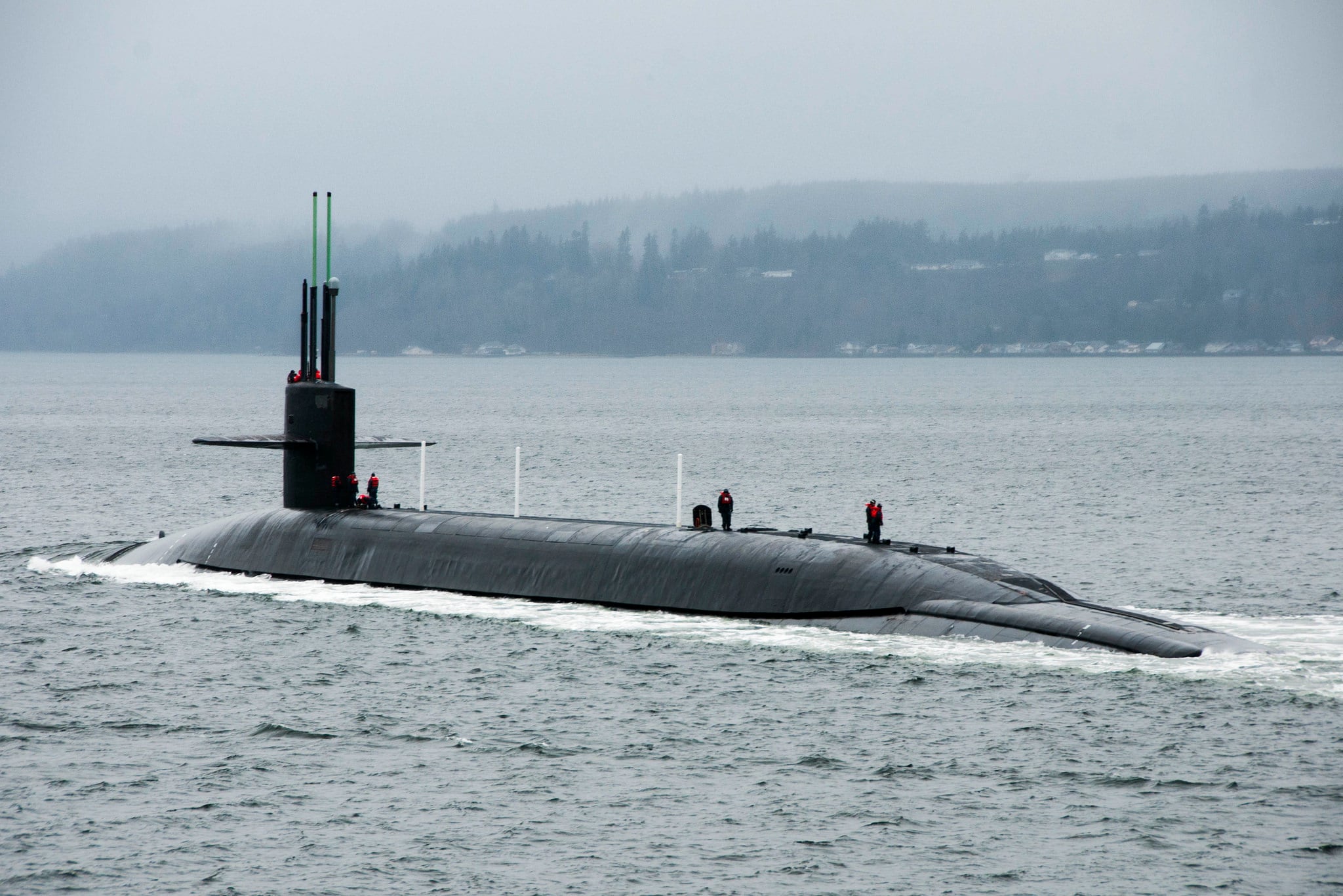A U.S. Navy plan to build a 308 ship fleet will cost a whopping $566 billion, according to the Congressional Budget Office.
As of 2016, the Navy's fleet of combat capable ships numbered 272, an inadequate number to meet Navy's role of policing the global commons and responding to near-peer adversaries like Russia and China, according to 2014 Navy assessments.
The 2017 Navy shipbuilding plan, submitted to Congress in July, intends to increase the size of the fleet to 308 ships by building 254 ships over a 30-year period. Figuring in retirement plans of current ships, the U.S. Navy would reach that goal by 2021, according to a report published by the CBO.
The CBO projects that the Navy's plan would cost roughly $566 billion over thirty years. This means nearly $19 billion a year for new ships — a figure 36 percent higher than the historical average of $14 billion the Navy usually spends yearly.
The construction of the ships will be a phased approach starting with seven in 2017, 38 ships between 2017 and 2021, and another 216 ships between 2022 and 2046.
Included in the plan is the construction of six CVN-78 Gerald R. Ford class aircraft carriers, which will allow the Navy to sustain an eleven carrier fleet until 2039 as older carriers reach the end of their service life.
However, submarines are expected to consume most of the shipbuilding budget despite the gargantuan cost of a new aircraft carrier, estimated at $11 billion for the new CVN-79, the John F. Kennedy.
The Navy’s fleet of attack submarines currently stands at 69, which includes 14 Ohio-class ballistic missile submarines capable of firing Trident nuclear missiles — a critical component of America’s nuclear deterrent.

The Gold Crew of the Ohio-class ballistic-missile submarine USS Henry M. Jackson (SSBN 730) transits the Hood Canal on Feb. 15, 2016, as the boat returns home to Naval Base Kitsap-Bangor following a routine strategic deterrent patrol.
Photo Credit: MC1 Amanda R. Gray/Navy
The U.S. Navy intends to add 56 submarines to the fleet, including 12 additional new Columbia-class ballistic missile subs that are expected to replace the aging Ohio-class Trident submarines, nuclear armed submarines that are nearing end of service life.
The new Trident missile submarines are slated to begin construction in 2021, and that program alone is estimated to cost $104 billion, with the remainder of the attack subs adding another $74 billion, the report reads.
However, as a result sequestration — the automatic series of budget cuts enacted by Congress in 2011 — the Navy faces an uphill battle in funding its plan to increase the fleet, forcing the Navy to potentially cut spending in other areas. The 2011 law placed caps on defense and non-defense discretionary spending through 2021.
Based on a 2016 force structure assessment, the Navy has since revised its goal of a 308 ship Navy to 355. The CBO has thus far only provided a detailed analysis of the plan submitted to Congress this past July calling for 308 ships. However, if the Navy got its 355 ship fleet, that cost would skyrocket to $25 billion a year, or 60 percent higher than historical averages, according to CBO estimates.
President Donald Trump has pledged a 350 ship Navy, the largest Navy buildup since the Reagan administration. It is not yet known how the U.S. Navy will meet its shipbuilding goal.
Despite White House support for the endeavor, there are many legal road blocks ahead, including budget hawk Mick Mulvaney, who was confirmed mid-February to run the
the objection of fellow Republican Sen. John McCain. The Arizona Senator voted no on Mulvaney's confirmation over his support of defense spending cuts.
Shawn Snow is the senior reporter for Marine Corps Times and a Marine Corps veteran.





